Grub Control
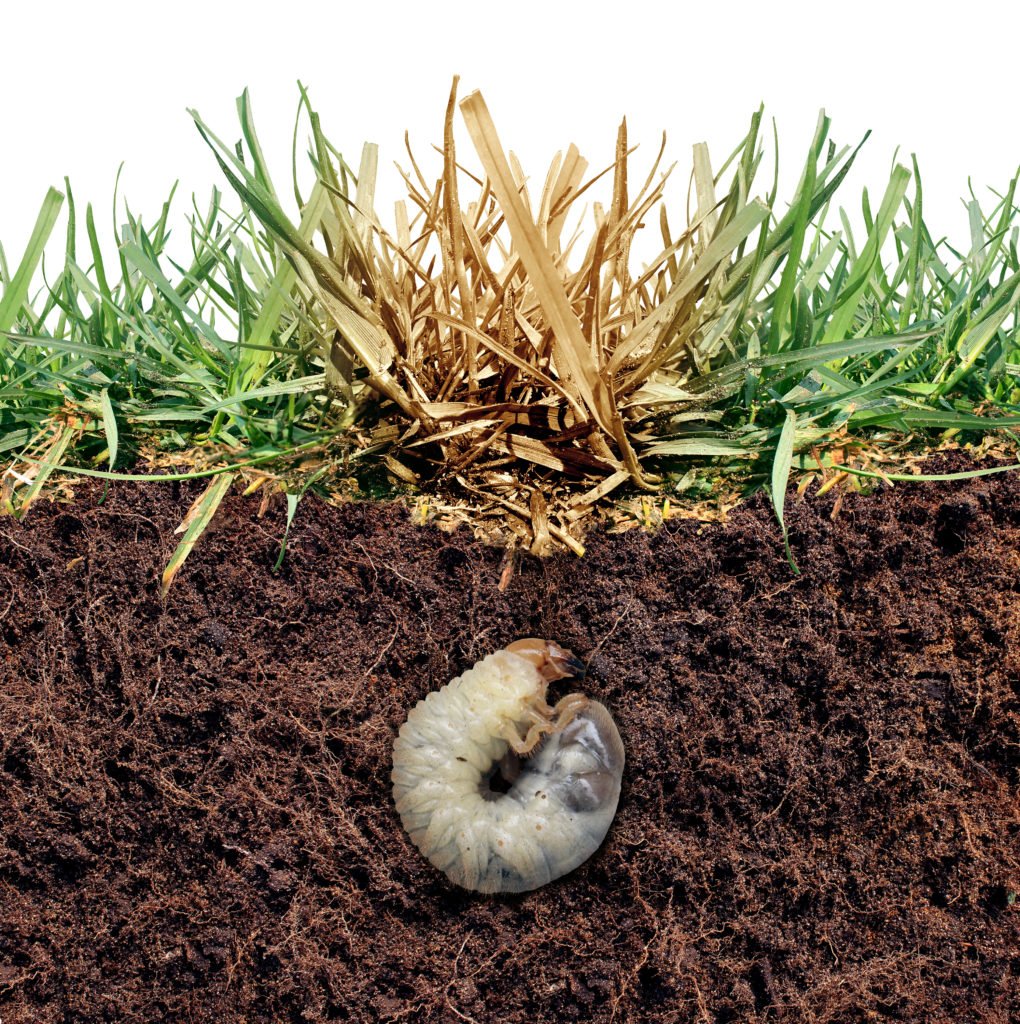
White Grubs and Grub Control
If you've noticed patches of brown or thinning grass in your lawn, you may have a grub problem. Specifically, white turf grubs are a common pest in Michigan that can wreak havoc on your landscape. Understanding these pests and how to effectively control them is key to keeping your lawn healthy and thriving.
What Are White Turf Grubs?
White turf grubs are the larvae of various beetles, most notably the Japanese beetle, chafers, and June bugs. These grubs live beneath the surface of your lawn, feeding on grassroots, which leads to areas of dead or dying grass. These pests are typically white or creamy in color and have a distinct C-shape.
The adult beetles lay eggs in the soil during the summer, and the larvae hatch and begin feeding on the roots of grass and plants during late summer and early fall. As they feed, they create severe damage to your lawn that can be difficult to recover from if left unchecked.
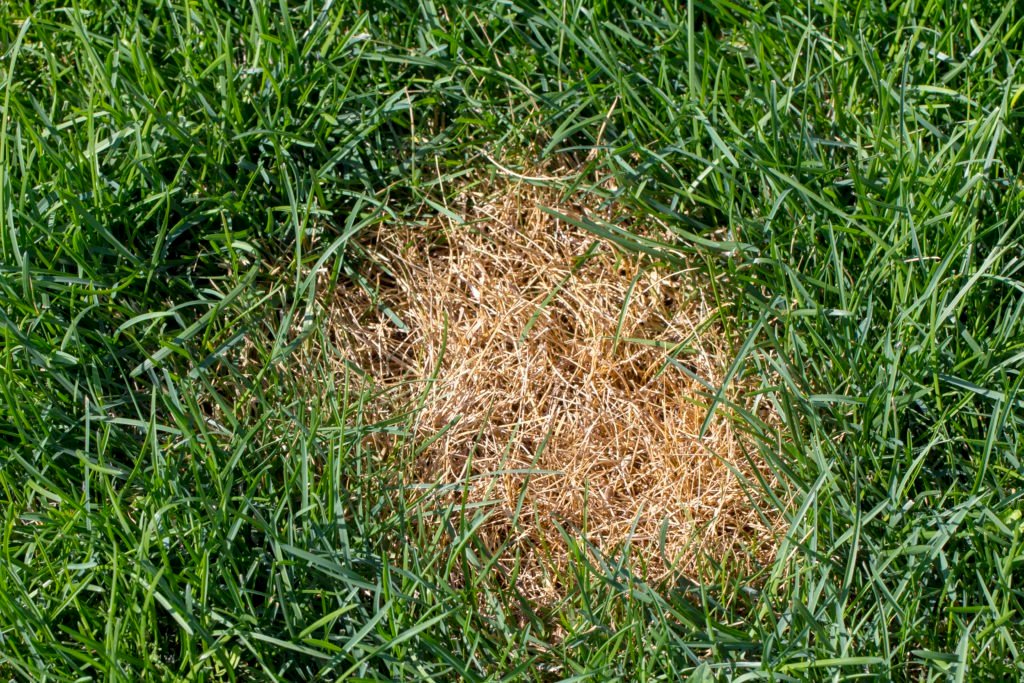
Signs of a Grub Infestation
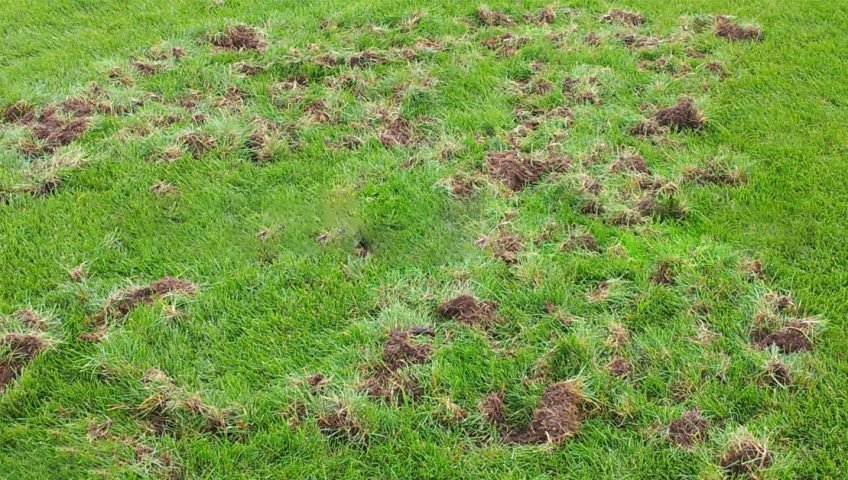
Discolored Patches
Brown or yellow spots on your lawn, especially in areas where grass appears to be
thinning.
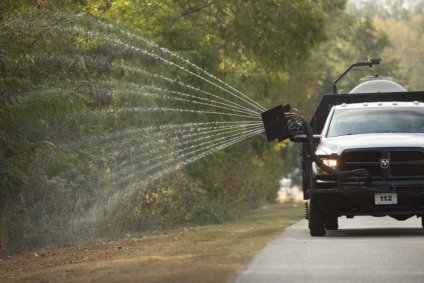
Soft, Spongy Lawn
As grubs eat the roots, they weaken the grass, causing it to pull away easily from the
soil.

Increased Animal Activity
Animals like raccoons, skunks, and birds may dig up your lawn in search of grubs, further damaging your
yard.
Why Grub Control is Important
Grubs not only damage your grass but can also attract other pests and predators to your property. Without effective control, they can cause long-term damage to the health of your lawn and landscape. Grubs feed on the roots of plants, reducing the grass's ability to absorb nutrients and water. This leads to poor growth, weakened turf, and potential lawn death in severe cases.
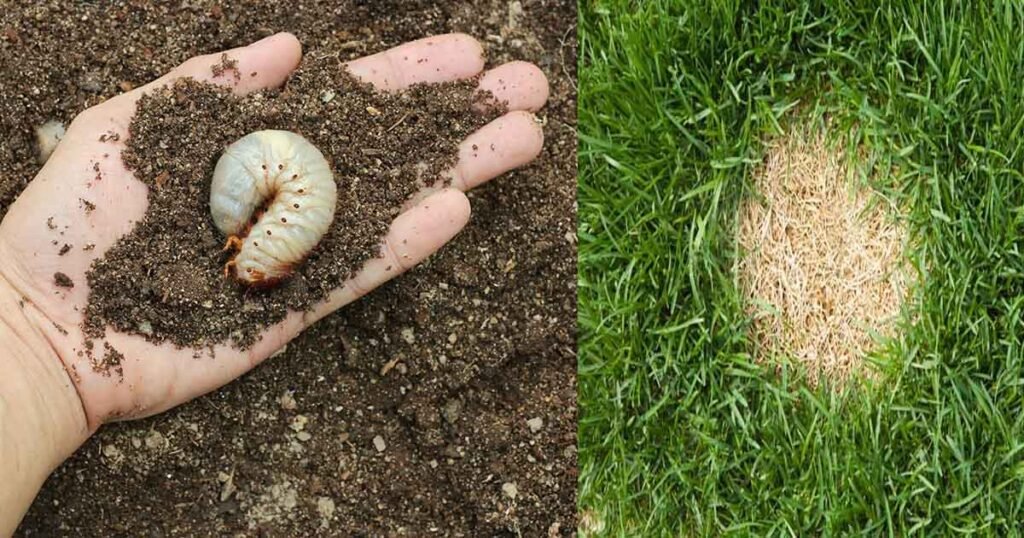
Effective Grub Control Methods
Preventive Treatments
Preventing a grub infestation is much easier than dealing with an established one. Apply a grub control product in early summer or late spring before grubs hatch. These products are designed to prevent the eggs from maturing into larvae, keeping your lawn safe from damage.
Nematodes
These microscopic organisms are a natural, eco-friendly way to control grubs. When applied to the lawn, nematodes infect and kill grubs without harming the environment.
Chemical Treatments
For more severe infestations, chemical grub control products can provide fast and effective results. These products work by killing grubs on contact and are especially helpful in areas with high grub populations.
Cultural Practices
Keep your lawn healthy by regularly fertilizing and watering it. A strong, healthy lawn is better equipped to recover from minor damage and resist pest invasions.
Regular Lawn Inspections
Early detection is key to managing a grub infestation. Routinely inspect your lawn for signs of damage or grubs, especially during late summer and fall.
Professional Grub Control Services in Michigan
If you’re dealing with a significant grub problem or want to take a proactive approach to protect your lawn, Imperial Services offers professional grub control solutions in Saginaw, Midland, Bay City, and Freeland. Our experienced team uses effective, eco-friendly treatments tailored to your specific needs. We can help you identify grub infestations early and take appropriate action to ensure your lawn stays healthy and beautiful year-round.
